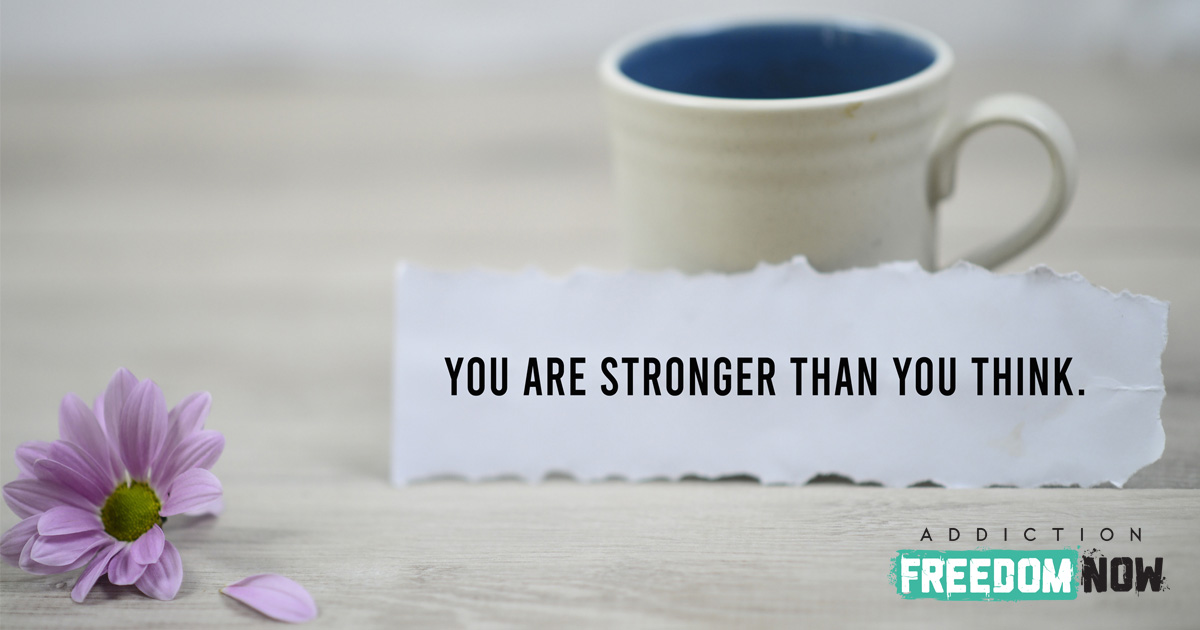Recovery from a substance use disorder can be a long, challenging road. In part, this is because true recovery is not just about staying sober, but also overcoming the obstacles that contributed to substance use in the first place. It is then that those in recovery can begin replacing unhealthy habits with positive ones.
Substance Abuse Treatment Types
It is generally accepted that evidence-based substance use disorder (SUD) treatment is focused on five general treatment types. In a quality SUD treatment center, these treatments are based on uniform, reliable methods while still being tailored to each individual. This ensures that each person receives approved therapies and treatment methods in a way that best suits their needs and addresses their condition. This combination of science-based methodologies and unique administration allows individuals to thrive and grow in recovery without enduring one-size-fits-all practices that fail to address their unique experiences and substance use cases.
Approved treatment strategies are:
Each of these treatments is scientifically proven to aid in recovery from not just substance use but also from the circumstances that led the individual to substance use in the first place. Each of these methodologies can work on components of SUD in isolation. However, when combined, they are useful aspects of a comprehensive substance use disorder treatment program.
Medication-Assisted Treatment

Medication-assisted treatment or MAT, involves the use of approved pharmaceutical medications to make the detox and recovery process easier. MAT is used in addition to behavioral therapies. The goal of medication-assisted treatment is to help combat withdrawal symptoms and substance cravings in order to restore balance to the brain and body and make it easier to recover from dependence on a substance.
Withdrawals from certain substances can lead to risky or even life-threatening conditions, especially without the use of approved medications and medical supervision to address the withdrawals. Alcohol withdrawal, for example, can lead to seizures and hallucinations, and in the worst cases, unconsciousness and death. Such symptoms can be moderated using medication to keep people safe as the brain and body adjust to the lack of alcohol.
Research shows that severe withdrawals can lead to a life-threatening condition known as opioid withdrawal syndrome in the case of opioid treatment. This is especially true when attempted at home without medical supervision. That’s why a proper medication-assisted treatment plan gradually tapers away from opioids, benzodiazepines, and other drugs and uses medications to address potentially dangerous withdrawal symptoms.
The three FDA-approved medications, naltrexone, buprenorphine, and methadone, are designed to be used in combination with counseling and psychotherapy. This is important to ensure clients can safely and successfully cease substance use while building strategies for the future and addressing the underlying causes of addiction. Ultimately, medication-assisted treatment is essential for many clients, but the medication itself must be combined with behavioral treatment strategies for the best possible results.
Cognitive Behavioral Therapy
Cognitive behavioral therapy, also known as CBT, is a specific type of psychotherapy designed to induce behavioral changes in a client. By addressing the negative thought processes and behaviors behind a particular habit, CBT can help a client adopt healthier behaviors and attitudes, ultimately enabling them to move away from the negative habit. CBT is used for a variety of mental health disorders but is especially helpful in the case of substance use disorder treatment.
Cognitive behavioral therapy is especially critical in preventing relapse once an individual has ceased substance use because SUDs alter the brain and affect thought patterns and subsequent behaviors. Unhealthy thought patterns and the negative habits they cause play an enormous role in substance use disorders. CBT focuses on identifying stressful events, addressing the meanings individuals assign to those events, working through the negative thoughts that arise, and challenging how the person both views and responds to the situation. By eliminating unhelpful thinking and replacing it with positive thoughts and healthy behaviors, CBD can prevent relapse long after SUD treatment ends.
Cognitive behavioral therapy has been proven to work as a treatment for substance use disorder, whether it’s for adolescents or for adults with underlying mental health conditions. CBT techniques can then be used to address other stressful situations as they arise throughout the person’s life.
Trauma Therapy

Trauma therapy may seem self-explanatory: this therapy is designed to help people overcome a past traumatic event. In many cases, this event has resulted in post-traumatic stress disorder or other long-term mental health issues. When used correctly, trauma therapy can help those in need of treatment for substance use disorder.
Trauma and substance use disorder are often linked. Traumas, especially traumas that have caused post-traumatic stress disorder (PTSD), can result in anxiety, depression, flashbacks, sleep problems, and fluctuating emotions. Many people self-medicate with substances like illicit drugs or alcohol or misuse prescription medications to find relief from the ongoing trauma response. In this way, a traumatic life event can start a cycle of self-medication, tolerance, and increasing use that eventually results in a substance use disorder. That’s why a critical aspect of recovery from a substance use disorder is addressing the trauma that initiated substance use or medication misuse in the first place.
Trauma therapy is a specialized form of talk therapy specifically designed to help people address the emotional and mental health-related effects of their initial trauma. However, trauma therapy can look different depending on the individual. Some clients may have repressed or inaccurate memories of the event, while others will simply be uncomfortable opening up about their past. That’s why trauma therapy must be handled with care by a therapist that the individual trusts and is willing to talk to. As trauma can lead to severe and misplaced feelings of blame and guilt, working through those emotions can be difficult but can result in helping the client heal.
As an extension of trauma therapy, trauma-informed care aims to provide multiple forms of treatment to those beginning recovery, all with the stipulation that therapists and recovery specialists remain mindful of the person’s trauma. In some cases, trauma-informed therapy can incorporate a variety of trauma therapies, including eye movement desensitization and reprocessing therapy (EMDR), cognitive behavioral therapy with a focus on addressing trauma, and more. Trauma-informed therapy is particularly useful for those experiencing PTSD in addition to SUD, which involves:
- A trauma exposure
- An intrusive symptom, like nightmares, flashbacks, or an intense reaction upon re-exposure to a trauma
- Avoidant behavior, in which the person does not want to interact with people, places, or other things linked to the trauma
- Psychological symptoms like self-blame, negative worldview, negative mood, inability to experience happiness, memory loss related to the trauma, suicidality, decreased interest in daily activities, and other distorted thought processes
- Physiological and emotional responses to stress, including hypervigilance, anger, recklessness, insomnia, and inability to focus
Dual Diagnosis Treatment
A dual diagnosis occurs when someone is diagnosed with two mental health disorders at once. In the context of SUD treatment, the individual displays both substance use disorder and another mental health disorder. Ceasing substance use without addressing existing mental health conditions is not often effective, as SUD and mental health conditions often fuel one another. A person may pursue substance use to self-medicate mental health conditions like anxiety or PTSD, which eventually serves to worsen the underlying condition. Other people who have developed a dependency on medication or other substances may experience mental health effects while ceasing use.
Historically, people with a dual diagnosis did not experience comprehensive care. Disorders were treated separately, often at different facilities, and the treatments were rarely designed to work together. As substance use disorder recovery research progressed, however, modern rehabilitation centers began to offer dual diagnosis treatment to address mental health conditions and the mechanisms behind substance use. Those experiencing dual diagnosis treatment are frequently more satisfied that their treatment has led to long-term recovery.
Because of the wide variety of mental health conditions that can be found alongside a substance use disorder, dual-diagnosis treatments are extremely customizable to the individual. Common disorders experienced with SUD include depression, anxiety, bipolar disorder, attention deficit disorder (ADD), attention deficit and hyperactivity disorder (ADHD), obsessive-compulsive disorder (OCD), eating disorders, PTSD, and schizophrenia.
Many people seeking treatment for SUD have two or more mental health disorders; for example, depression and anxiety are often experienced together. Both depression and anxiety are commonly linked to substance use disorders, whether as a result of substance use or as a cause.
Upon beginning treatment at a substance use disorder treatment center with dual diagnosis capabilities, clients will participate in a session with a treatment coordinator to determine whether any other mental health disorders exist. A treatment plan is then created to address each of the unique aspects of the individual’s mental and emotional health. Mental health treatment can occur alongside substance use disorder treatment in the way that best fits the client’s needs.
Relapse Prevention
The goal of any substance use treatment strategy is to provide the client with the tools they need to prevent relapse and stay on the road to recovery after treatment is complete. Most treatment methods aim to provide these tools, which is why a comprehensive treatment plan designed to supply a number of methods to approach recovery is so important. A proper relapse prevention strategy requires a plan of its own to organize these tools, and this plan should be tailored to help the individual with their unique anticipated roadblocks.
Relapse prevention therapy recognizes that substance use disorder is a chronic condition with the risk of relapse at any time. This therapeutic approach focuses on helping clients learn to avoid relapse by recognizing situations that may lead to relapse and putting a plan in place to address the situation without substance use. This is known as a relapse prevention plan, and research shows that clients participating in relapse prevention are less likely to experience relapse.
A relapse prevention plan is designed to account for the obstacles a person may experience after treatment concludes. These obstacles may include psychological and emotional triggers, stressful situations, the presence of negative thoughts and emotions, and even the return of cravings and social situations that invite a relapse. Additionally, the plan should account for the fact that relapse rarely happens all at once and instead occurs in stages.
Typically, relapse prevention therapy includes both private and group therapy sessions that focus on the adoption and practice of healthy habits and learning about personal triggers and responses. The creation of a relapse prevention plan, alongside other evidence-based treatment strategies, gives each individual the tools they need to respond to the triggers present in daily life and stay on the road to recovery for longer periods of time. In addition, relapse prevention therapy often incorporates aftercare programs, like alumni networks, education sessions, and support groups, to help clients build the strong support network necessary to maintain recovery.
Evidence-Based Treatments at Illuminate Recovery

Evidence-based treatment strategies are at the core of our treatment here at Illuminate Recovery. Our intensive outpatient and partial hospitalization programs address dual diagnoses and trauma-affected SUD with evidence-based strategies like cognitive behavioral therapy, trauma therapy, medication-assisted therapy, dual diagnosis care, and relapse prevention therapy.
Sources:
- PASHAEI, T., SHOJAEIZADEH, D., RAHIMI FOROUSHANI, A., GHAZITABATABAE, M., MOEENI, M., RAJATI, F., & M RAZZAGHI, E. (2013). Effectiveness of Relapse Prevention Cognitive-Behavioral Model in Opioid-Dependent Patients Participating in the Methadone Maintenance Treatment in Iran. Iranian Journal of Public Health, 42(8), 896–902. https://www.ncbi.nlm.nih.gov/pmc/articles/PMC4441922/
- Kranzler, H. R., & Liebowitz, N. R. (1988). Anxiety and Depression in Substance Abuse: Clinical Implications. Medical Clinics of North America, 72(4), 867–885. https://doi.org/10.1016/s0025-7125(16)30749-0
- Schulte, S. J., Meier, P. S., & Stirling, J. (2011). Dual diagnosis clients’ treatment satisfaction – a systematic review. BMC Psychiatry, 11(1). https://doi.org/10.1186/1471-244x-11-64
- Ivsins, A., & Yake, K. (2018). Looking beyond harm: meaning and purpose of substance use in the lives of marginalized people who use drugs. Drugs: Education, Prevention and Policy, 27(1), 27–36. https://doi.org/10.1080/09687637.2018.1497145
- Haller, M., Norman, S. B., Cummins, K., Trim, R. S., Xu, X., Cui, R., Allard, C. B., Brown, S. A., & Tate, S. R. (2016). Integrated Cognitive Behavioral Therapy Versus Cognitive Processing Therapy for Adults With Depression, Substance Use Disorder, and Trauma. Journal of Substance Abuse Treatment, 62, 38–48. https://doi.org/10.1016/j.jsat.2015.11.005
- https://www.sciencedirect.com/science/article/pii/S0740547215002883
- Waldron, H. B., & Kaminer, Y. (2004). On the learning curve: the emerging evidence supporting cognitiveâbehavioral therapies for adolescent substance abuse. Addiction, 99(2), 93–105. https://doi.org/10.1111/j.1360-0443.2004.00857.x
- Trevisan, L. A., Boutros, N., Petrakis, I. L., & Krystal, J. H. (1998). Complications of Alcohol Withdrawal. Alcohol Health and Research World, 22(1), 61–66. https://www.ncbi.nlm.nih.gov/pmc/articles/PMC6761825/




